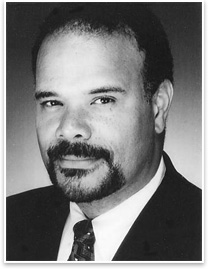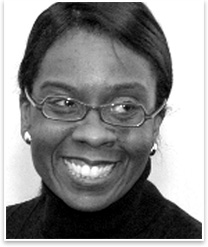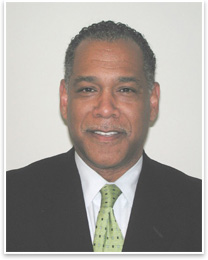
| DIVERSITY Architects Engaged with Civic Leadership Summary: Whatever their racial or gender background, the number of architects who were ever engaged in public service is low. The number of architects of color and of women is even lower. Among all architects, perhaps best known, at least since Thomas Jefferson, is Richard Swett, FAIA, who served in the Congress 1990-’94 and later as U.S. ambassador to Denmark. Among architects of color, Harvey B. Gantt, FAIA, is famous for his stint as mayor of Charlotte 1983-’87 before rejoining his firm there, Gantt Huberman Architects. For this month’s AIArchitect diversity column, we have selected three practitioners of color—two architects and one architecture-graduate-turned-planner. William A. Gilchrist, FAIA, has been director of the Department of Planning, Engineering, and Permits for the City of Birmingham since 1993. Toni Griffin, AIA, is a former deputy director for neighborhood planning and revitalization planning (two departments she ran concurrently) in the Washington, D.C., Office of Planning. Griffin takes over in June as Newark director of community development. Mitchell Silver, PP, AICP, is director of the Department of City Planning and Urban Design Center in Raleigh. They bring to the table a wealth of experience, vigor, and resilience.
Director since 1993 of the Department of Planning, Engineering, and Permits for Birmingham, Bill Gilchrist can afford to speak softly. The big stick he carries as head of a department with a staff of 220, of whom about one third are of color, is that he is responsible for the city’s urban design, land use, zoning, engineering services, building code, and right-of-way. The staff comprises a range of positions, from professionally licensed through clerical. Says Gilchrist: “We have engineers, architects, certified planners, surveyors, a very strong Landmark Internet Map Server group with the Geographic Information System, and we’re almost self-contained—very technically qualified folk.” The AIA, the American Planning Association, and the National League of Cities have among other civic and professional groups honored the work of his department. A graduate of MIT’s schools of management and architecture, with a master’s degree from each, plus a degree from Harvard’s Kennedy School of Government, Gilchrist’s educational focus has always been on public policy and the built environment, and one shapes the other. He was among the first Aga Khan traveling fellows, ending up documenting the Swahili architecture of coastal Kenya. He has chaired the committee that oversees the AIA Regional/Urban Design Assistance Teams. He’s a trustee of the Urban Land Institute and is vice chairman of its executive committee. Currently, Gilchrist serves on the departmental visiting committee of the MIT School of Architecture, whose composition—equal parts African Americans, women, and whites—strikes him as a model of meritocracy. He was recently appointed to the international advisory committee of Carnegie Mellon University’s Remaking Cities Institute. Finally, he excels as a communicator, a priceless skill in an era when design professionals often trip over the English tongue through muddy language and incomprehensible jargon. He has been interviewed on National Public Radio, appeared on PBS’s The News Hour with Jim Lehrer, and speaks often on urbanism, regional planning, citizen participation in the public realm, and the history of urban settlement. He writes on occasion for the Birmingham News, a Pulitzer-Prize-winning newspaper. In his interview, Gilchrist speaks of fulfilling master planning projects with Birmingham, how architecture has influenced his life, and the importance of patronage in the development of the profession.
Toni Griffin, at 42, will ascend in June to the post of director of community development for the City of Newark. Her talent is much needed. New Jersey’s largest city faces a huge set of social, economic, and planning challenges as its hard-hitting mayor Cory Booker completes his first year in office. Griffin is no stranger to the stresses and strains of public service. For five years (2000–’05) she worked concurrently as deputy director for neighborhood planning and revitalization planning in the Washington, D.C., Office of Planning then moved to the Anacostia (D.C.) Waterfront Corporation, where she was vice president of design. Prior to these roles, she was vice president for planning and tourism development in the Upper Manhattan Empowerment Zone Development Corporation. I first saw Griffin in action in April 2007, at the Harvard Graduate School of Design (GSD), where she moderated a one-day workshop sponsored by the John L. Loeb Fellowship Program in which she, a former Loeb Fellow, dealt expertly with a group of 16 articulate but often fractious participants, with a polite but unbending hand, moving everyone to the end of a heavy agenda. Before any of this, she cut her teeth at the Chicago office of Skidmore Owings & Merrill, which she joined in 1986, the year she earned her BArch from the University of Notre Dame. She worked there for 12 years, became an associate partner, and was asked to start up an SOM office in Detroit managing the General Motors World Headquarters project. In the full text of this article (link below), Griffin shares the achievements she has found most satisfying during her career, including her vision for the future of Newark.
On the way, he worked first as city planner in New York City’s Department of City Planning and later as an urban planning, design, and policy specialist before serving as director of the Northern Manhattan office of Manhattan Borough President (and one-time mayoral candidate) Ruth Messinger. Active in the American Planning Association (APA), he presided over the APA New York Chapter and, concerned about the status of minority practitioners, founded and chaired the committee for African American and Latino planners (later renamed the Committee for Ethnic and Cultural Diversity). Silver has spent most of his career in public service, but between 1997 and 2001 he crossed to the private sector, where he was a project manager and partner in Abeles Phillips Preiss & Shapiro, Inc., a visionary New York-based regional planning firm where he played a key part in the successful development and redevelopment of towns across New York, New Jersey, Pennsylvania, and Connecticut. He then gained firsthand experience running a public agency as business administrator of the North Jersey city of Irvington, overseeing day-to-day operations of a municipality that counted 8 departments and 600 employees. He served a brief term as deputy planning director of Washington, D.C., before moving to Raleigh. All together, Silver has worked in more than 50 jurisdictions and is noted among his peers as a creative thinker and problem solver, having been in the midst of many cutting-edge trends and visionary plans, such as Harlem on the River and the recovery of neighborhoods in Philadelphia and Washington. In the full-text article, he shares his views on planning and racial topics in his profession, where, as of 2004, a tiny 2.7 percent of self-identified planners were African American, compared to 2.2 percent Latino/Hispanic, 2.9 percent Asian, and 0.4 percent Native American. (The numbers are even lower when you count only certified planners.) Click here to read the full-text article. |
||
Copyright 2007 The American Institute of Architects. All rights reserved. Home Page |
||
news headlines
practice
business
design
recent related
› Three Views on the Prospects of Increasing Diversity in the Profession
› The Educators
› Young African American Women Sharpen Ties to Their Communities
Images:
Image 1: William A. Gilchrist, FAIA
Image 2: Toni L. Griffin, AIA
Image 3: Mitchell Silver, PP, AICP

 William A. Gilchrist, FAIA
William A. Gilchrist, FAIA Toni L. Griffin, AIA
Toni L. Griffin, AIA Mitchell Silver, PP, AICP
Mitchell Silver, PP, AICP